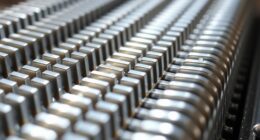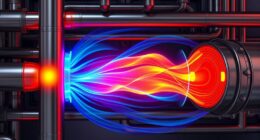Seeking ways to enhance the energy efficiency of your heat pump? Search no more! This guide will demonstrate actionable methods to improve your heat pump’s operation.
From understanding efficiency ratings to utilizing smart technology, we’ve got you covered. Imagine a home where your heat pump effortlessly keeps you comfortable while saving you money.
With our expert tips, you can make this a reality. Get ready to serve your energy needs and maximize your heat pump’s efficiency!
Key Takeaways
- Understanding heat pump efficiency ratings (SEER and HSPF) is crucial for informed decision-making.
- Installing a smart thermostat and setting temperature schedules based on daily routines can optimize heat pump efficiency.
- Regular maintenance, including ensuring proper airflow and inspecting ductwork for leaks or blockages, is essential for maximum efficiency.
- Enhancing insulation and weatherization, such as insulating ductwork and checking insulation in walls and ceilings, can greatly improve heat pump energy efficiency.
Understanding Heat Pump Efficiency Ratings
We need to understand the efficiency ratings of heat pumps to make informed decisions about our energy usage.
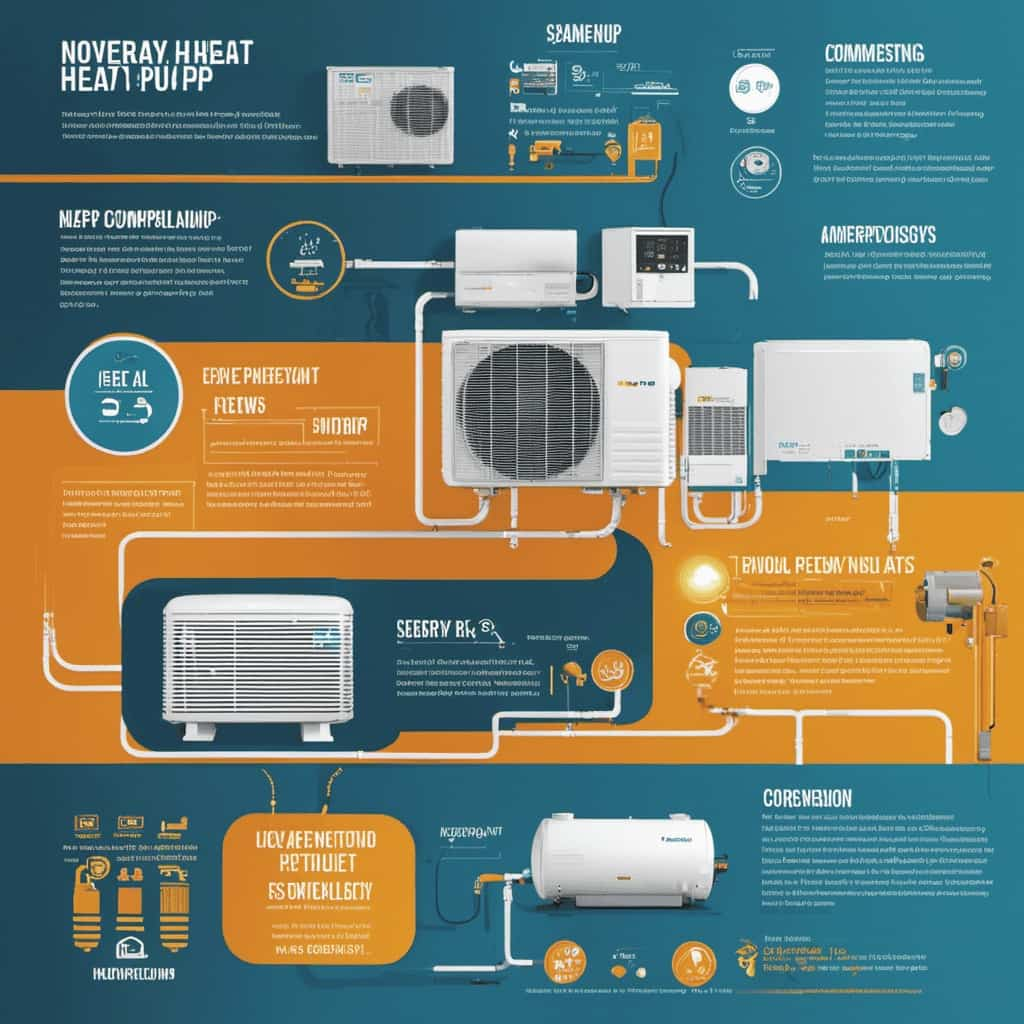
Heat pump efficiency ratings are essential in determining how effectively and efficiently the heat pump can provide heating and cooling to our homes.
The most common efficiency rating for heat pumps is the Seasonal Energy Efficiency Ratio (SEER). This rating measures the cooling efficiency of the heat pump during the summer months.
Another important rating is the Heating Seasonal Performance Factor (HSPF), which measures the heating efficiency of the heat pump during the winter months.
By understanding these ratings, we can choose a heat pump that meets our specific needs and saves energy.
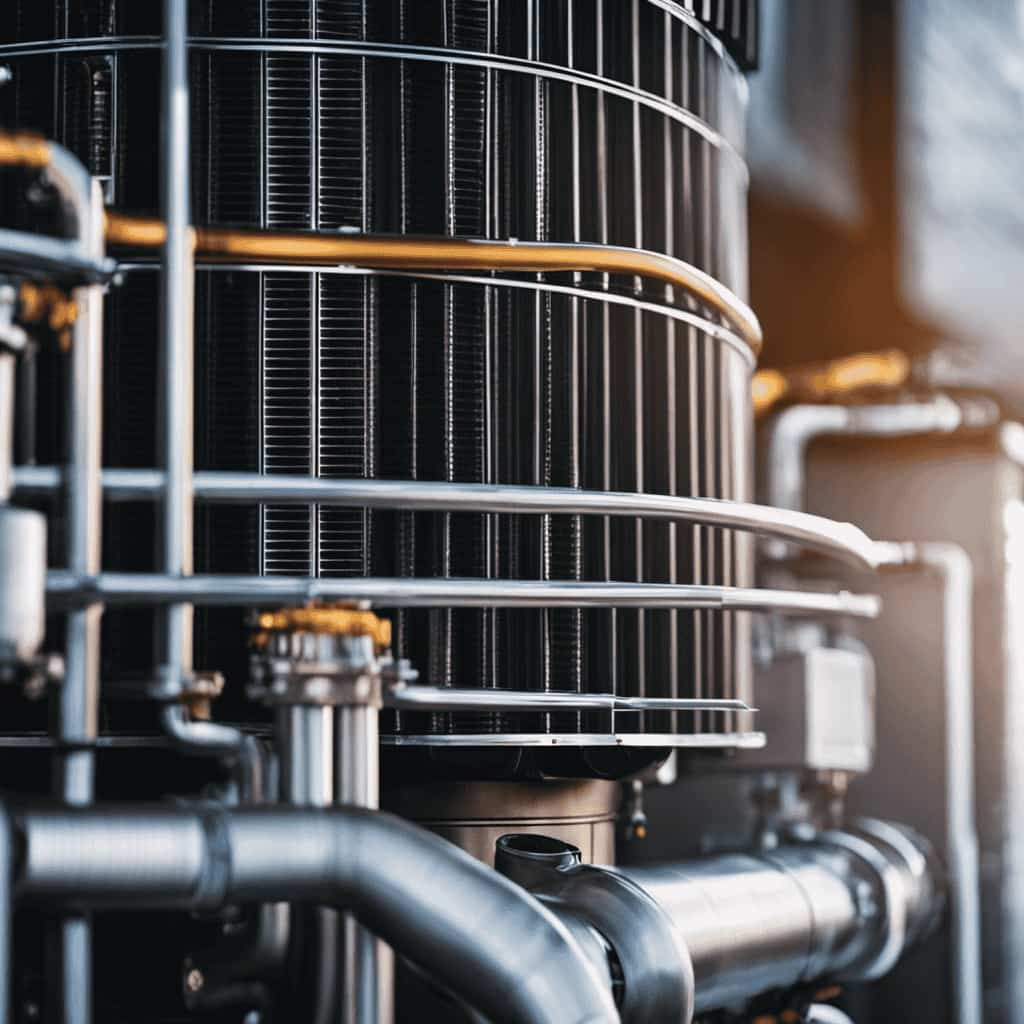
To maintain optimal efficiency, regular heat pump maintenance is crucial. This includes cleaning or replacing filters, checking ductwork for leaks, and scheduling professional inspections.
Additionally, implementing energy-saving tips such as setting the thermostat to energy-efficient temperatures and properly sealing and insulating our homes can further enhance the efficiency of our heat pumps.
Optimizing Heat Pump Thermostat Settings
To maximize the energy efficiency of our heat pump, it’s important to optimize the thermostat settings. By making the right adjustments, we can reduce energy consumption and save money on our utility bills.
Here are three key tips for optimizing heat pump thermostat settings:
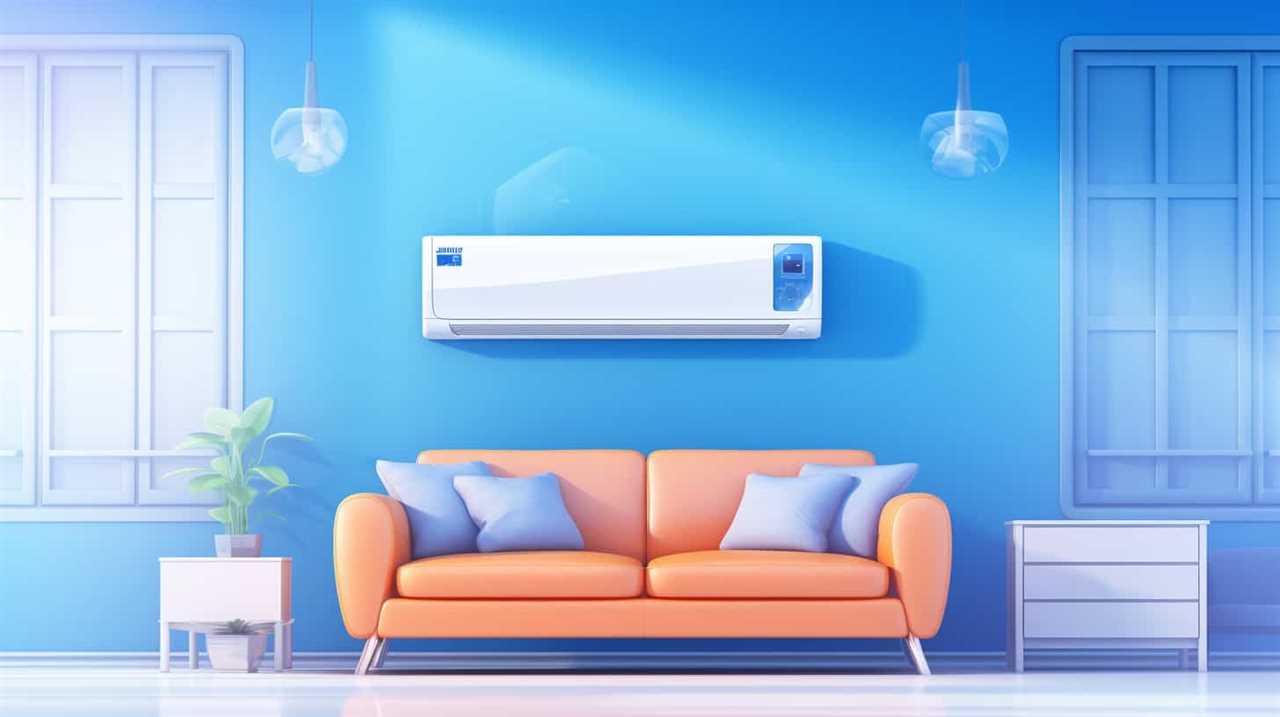
-
Install a smart thermostat: Investing in a smart thermostat allows us to easily program and control the temperature settings of our heat pump. These devices offer advanced features such as learning algorithms and remote access, enabling us to maximize energy savings.
-
Set temperature schedules: Setting temperature schedules based on our daily routine helps ensure that our heat pump operates efficiently. By adjusting the temperature when we’re away from home or asleep, we can minimize energy usage without sacrificing comfort.
-
Take advantage of energy-saving modes: Many smart thermostats offer energy-saving modes such as eco or vacation mode. Enabling these modes when we’re away for an extended period helps further reduce energy consumption.
Maintaining Proper Airflow for Maximum Efficiency
The proper airflow must be maintained to maximize the efficiency of our heat pump. Regular maintenance is crucial for ensuring that the airflow remains optimal. By neglecting proper maintenance, common airflow issues can arise, leading to reduced efficiency and increased energy consumption.

To troubleshoot these issues, it’s important to start by checking the air filters. Clogged or dirty filters restrict airflow and can cause the heat pump to work harder than necessary. Cleaning or replacing the filters regularly is a simple yet effective way to maintain proper airflow.
Additionally, inspecting the ductwork for any leaks or blockages is essential. Leaks can result in air loss, while blockages can restrict airflow.
Enhancing Insulation and Weatherization Around Heat Pump
Improving insulation and weatherization are key factors in maximizing our heat pump’s energy efficiency. By properly insulating our ductwork and sealing air leaks, we can ensure that our heat pump operates at its optimal level, saving us energy and money.
Here are three important steps to enhance insulation and weatherization around our heat pump:

-
Insulate ductwork: Insulating the ductwork prevents heat loss during the distribution of heated air. By using insulation materials like fiberglass or foam, we can minimize energy wastage and maximize the efficiency of our heat pump.
-
Seal air leaks: Air leaks around windows, doors, and other openings can lead to significant heat loss or gain, reducing the effectiveness of our heat pump. To address this, we should seal any gaps or cracks using weatherstripping or caulking. This will prevent air leakage and maintain a more consistent indoor temperature.
-
Check insulation in walls and ceilings: Proper insulation in walls and ceilings is crucial for maintaining a comfortable indoor environment. By ensuring that these areas are adequately insulated, we can reduce heat transfer and minimize the workload on our heat pump.
Utilizing Smart Technology for Energy-Efficient Heat Pump Control
Our smart thermostats and programmable timers, combined with our heat pump, can effectively optimize our energy efficiency and save us money.
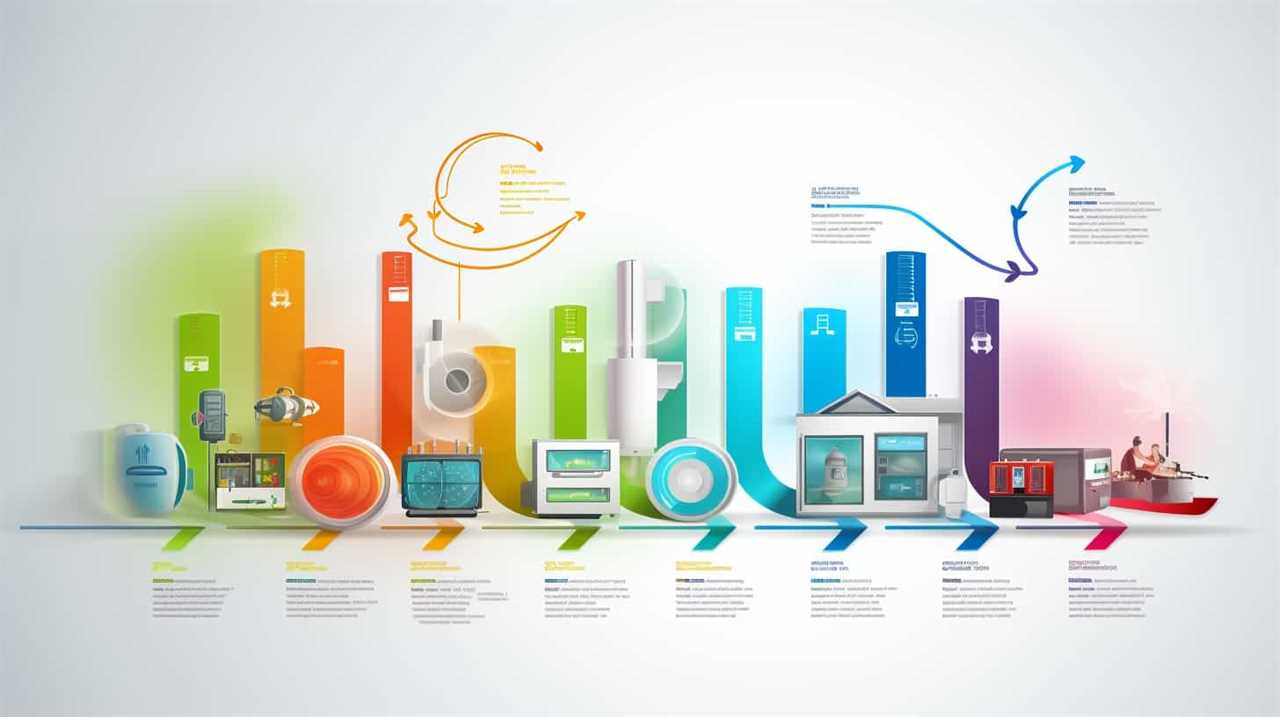
By utilizing smart home integration, we can have seamless control over our heat pump’s settings, even when we aren’t at home. With remote temperature monitoring, we can adjust the temperature according to our preferences and needs, ensuring that our heat pump operates efficiently.
Smart technology allows us to create customized schedules, so our heat pump only operates when necessary, avoiding unnecessary energy consumption. Additionally, smart thermostats can learn our heating and cooling patterns, adapting to our lifestyle and making automatic adjustments to maximize energy efficiency.
With the ability to control our heat pump remotely and tailor its operation to our specific requirements, smart technology is a valuable tool in achieving optimal energy efficiency and cost savings.
Frequently Asked Questions
What Are the Common Signs That Indicate a Heat Pump Is Not Functioning Efficiently?
We can identify common signs of heat pump inefficiency through heat pump maintenance and troubleshooting. By observing irregular temperature regulation, increased energy consumption, and unusual noises, we can address any issues promptly.
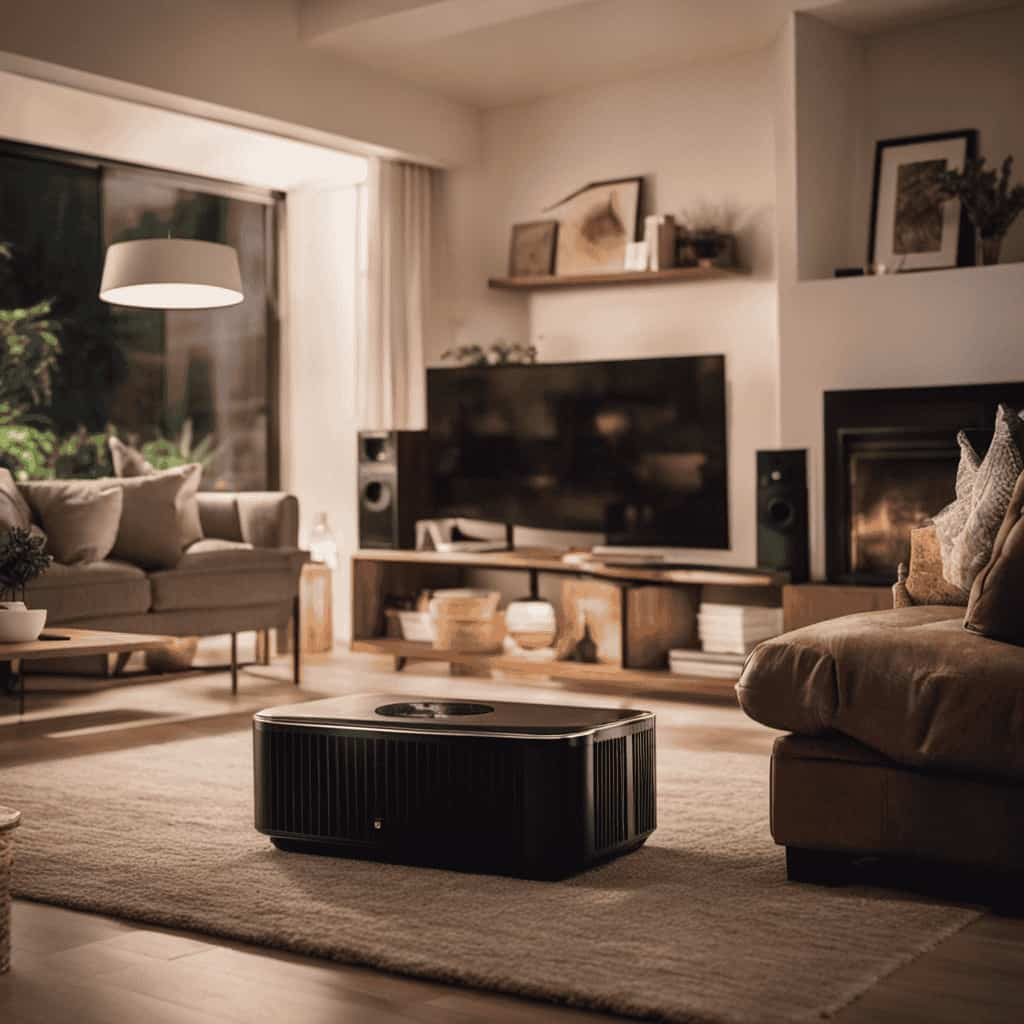
Are There Any Government Incentives or Rebates Available for Upgrading to a More Energy-Efficient Heat Pump?
Yes, there are government incentives and rebates available for upgrading to a more energy-efficient heat pump. These incentives can significantly offset the cost and make it more affordable for homeowners to make the switch.
How Often Should a Heat Pump Be Serviced or Maintained to Ensure Maximum Energy Efficiency?
We recommend regular heat pump maintenance to ensure maximum energy efficiency. Best practices for heat pump maintenance include scheduling professional service at least once a year and performing regular filter cleaning and inspections.
Can I Use My Heat Pump During Extremely Cold Temperatures, or Should I Have a Backup Heating System?
Yes, you can use your heat pump during extremely cold temperatures, but it’s recommended to have a backup heating system. Maximizing heat pump energy efficiency in different climates is crucial for optimal performance.
Are There Any Additional Accessories or Add-Ons That Can Further Improve the Energy Efficiency of a Heat Pump?
There are additional heat pump accessories and energy-saving tips that can maximize efficiency. We’ll discuss these in our guide on maximizing heat pump energy efficiency, providing practical information for serving others.
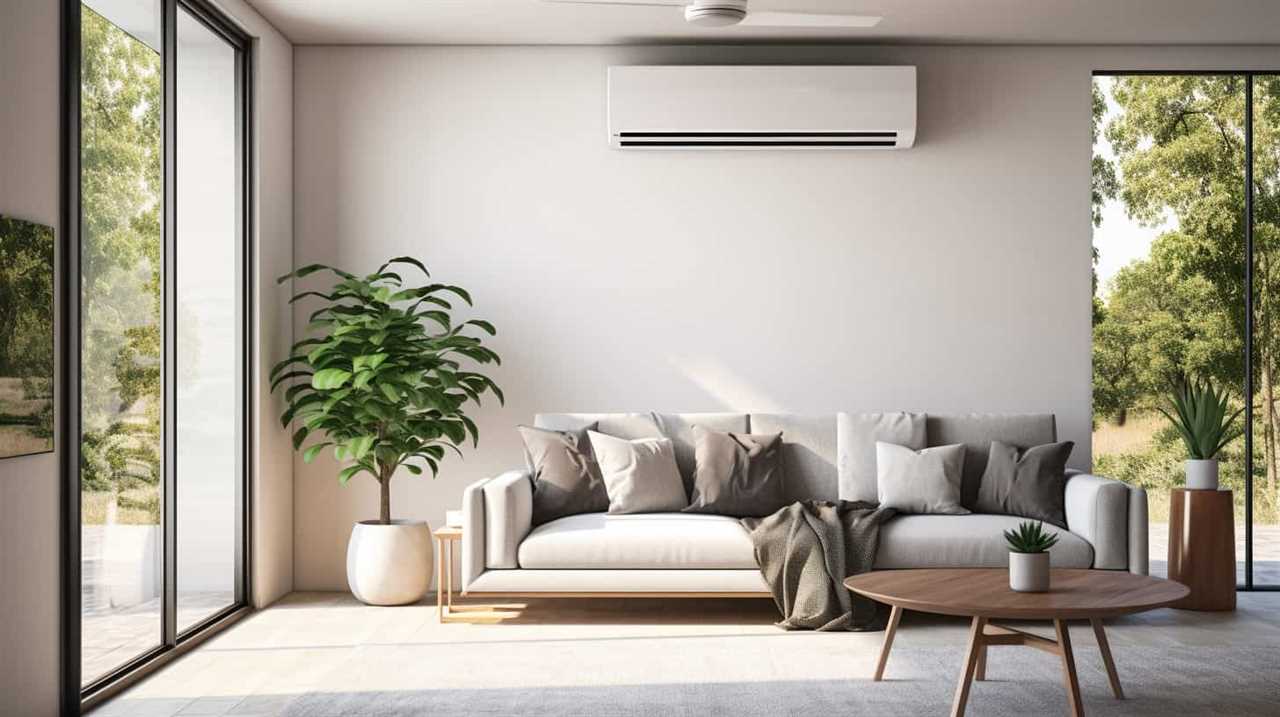
Conclusion
To maximize the energy efficiency of your heat pump, it’s crucial to understand efficiency ratings.
Optimize thermostat settings to ensure that your heat pump operates at its peak performance.
Maintain proper airflow by cleaning or replacing air filters regularly.
Enhance insulation and weatherization to prevent heat loss and improve overall efficiency.

Utilize smart technology for control, such as programmable thermostats or home automation systems.
By implementing these strategies, you can ensure that your heat pump operates at its peak performance, saving energy and reducing costs.
So, take action today and start reaping the benefits of a more efficient and practical heating system.






